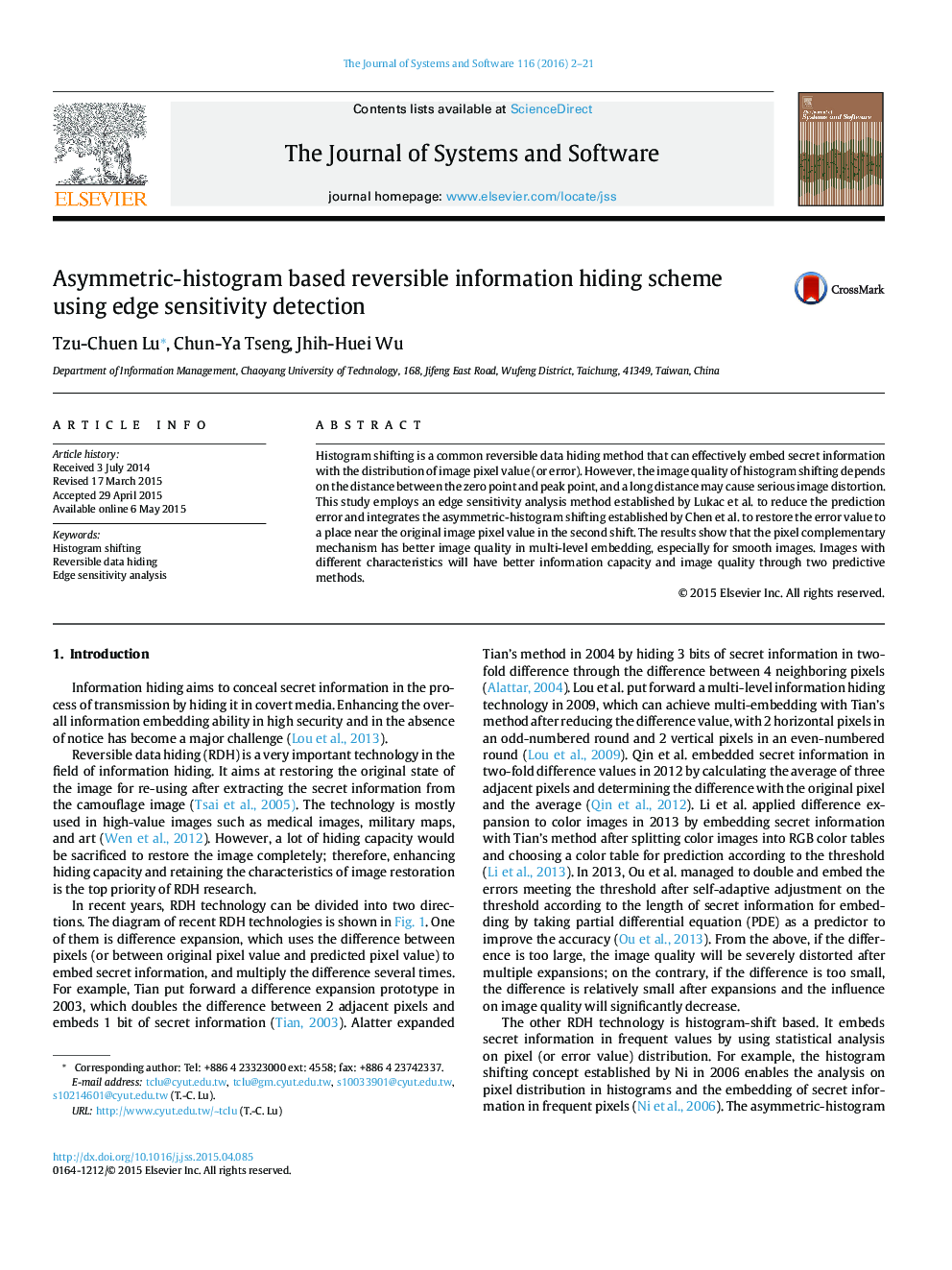| Article ID | Journal | Published Year | Pages | File Type |
|---|---|---|---|---|
| 461493 | Journal of Systems and Software | 2016 | 20 Pages |
•An edge sensitivity analysis method is applied to reduce the prediction error.•The asymmetric-histogram shifting is used to restore the error value.•Complementary mechanism can get better image quality in multi-level embedding.•Better information capacity is achieved through two predictive methods.
Histogram shifting is a common reversible data hiding method that can effectively embed secret information with the distribution of image pixel value (or error). However, the image quality of histogram shifting depends on the distance between the zero point and peak point, and a long distance may cause serious image distortion. This study employs an edge sensitivity analysis method established by Lukac et al. to reduce the prediction error and integrates the asymmetric-histogram shifting established by Chen et al. to restore the error value to a place near the original image pixel value in the second shift. The results show that the pixel complementary mechanism has better image quality in multi-level embedding, especially for smooth images. Images with different characteristics will have better information capacity and image quality through two predictive methods.
